May 15 - 21 2016: Issue 263
Bayview Days: Pittwater in the 1950's

Amos Home at Bayview around 1950 - with Pittwater in the background - the house was designed by Hugh Buhrich
Re: May 8-14, Issue 262
I found the above issue of the Pittwater Online News very interesting – especially the articles about the Church Point RFS training, the Pittwater schools and the front page story about Royal Prince Alfred Yacht Club. It brought back memories from my childhood at Bayview in the 1950s. My father was in the Church Point Bushfire brigade as it was then with his great friend Dr Walter Wearn from Scotland Island. I believe John Goffage (Chips Rafferty) was also a member at the time. The Pittwater schools articles included Loquat Valley School which I attended between 1954 and 1956 and my father was also a member of the RPA yacht club.
Some time ago, my daughter asked me to write my childhood memories and I included memories of the yacht club and loquat valley school. I have just done a quick cut and paste of those sections into the attached document which you may find interesting. I don’t know if any of it is suitable for publication in your online news but I would have no objection to you using it as you see fit.
Thanks for a very interesting publication.
Andrew Amos – May 9, 2016
I found the above issue of the Pittwater Online News very interesting – especially the articles about the Church Point RFS training, the Pittwater schools and the front page story about Royal Prince Alfred Yacht Club. It brought back memories from my childhood at Bayview in the 1950s. My father was in the Church Point Bushfire brigade as it was then with his great friend Dr Walter Wearn from Scotland Island. I believe John Goffage (Chips Rafferty) was also a member at the time. The Pittwater schools articles included Loquat Valley School which I attended between 1954 and 1956 and my father was also a member of the RPA yacht club.
Some time ago, my daughter asked me to write my childhood memories and I included memories of the yacht club and loquat valley school. I have just done a quick cut and paste of those sections into the attached document which you may find interesting. I don’t know if any of it is suitable for publication in your online news but I would have no objection to you using it as you see fit.
Thanks for a very interesting publication.
Andrew Amos – May 9, 2016
Bayview Days
By Andrew Amos
By Andrew Amos
My father, Owen Amos, had a small but striking house designed by Hugh Buhrich, a young German architect working with Douglas Snelling. Snelling’s firm became famous over later years through Snelling’s own work and his notable associates such as Neville Gruzman, Harry Seidler and Opera House designer Jorn Utzon. We lived in that house until late in 1956 when we moved to Pymble.
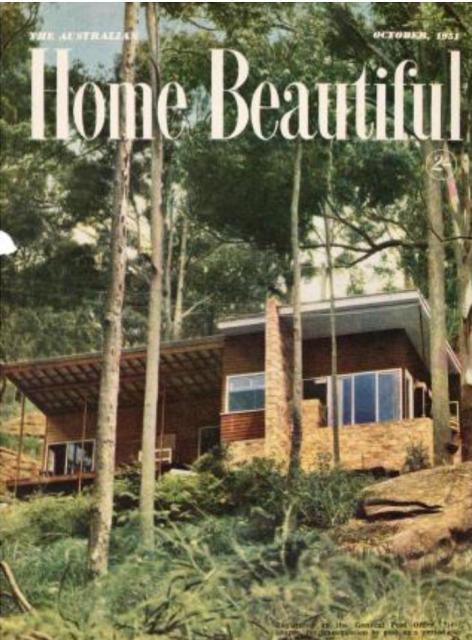 The House was at the Church Point end of Alexandra Crescent. It was a beautiful bush setting that had views through tall eucalypt trees across Pittwater towards Newport. There were not many houses there then and some were just weekenders. The mail was delivered by a lady riding a horse. I think there was a milkman too but don’t remember for sure.
The House was at the Church Point end of Alexandra Crescent. It was a beautiful bush setting that had views through tall eucalypt trees across Pittwater towards Newport. There were not many houses there then and some were just weekenders. The mail was delivered by a lady riding a horse. I think there was a milkman too but don’t remember for sure. Right: the Amos home featured as the October 1951 cover of The Australian home Beautiful magazine
Sydney writer, Davina Jackson, in documenting the history of Snelling’s work notes that, among the work undertaken in 1947, Hugh Buhrich, then 36, “completed his first built house, the Amos residence, 18 Alexandra Crescent, Bayview (cover of Australian House and Garden)”.
The house was only accessible by a large number of steps up through the bush from the street. We had a toilet in the bathroom when I was young but before that there was a pan toilet part way up the hill. It had to be there because the dunny men would not come further up the hill to collect the pan. There were koalas living in the trees nearby so that outdoor toilet was christened as the bears’ house.
The house was only accessible by a large number of steps up through the bush from the street. We had a toilet in the bathroom when I was young but before that there was a pan toilet part way up the hill. It had to be there because the dunny men would not come further up the hill to collect the pan. There were koalas living in the trees nearby so that outdoor toilet was christened as the bears’ house.
As well as koalas, there was other interesting wildlife including snakes and goannas. We would often come across big goannas basking in the sun on the big sandstone rocks near the steps to the road.
World War 2 was still in evidence at Bayview in the early 1950s. During the war all the wharves had been closed to the public and there was an evacuation plan in place should enemy action occur in Pittwater. At the Church Point end of Alexandra Crescent there was a deep excavated trench running up the hill from Church Point Road. This was known as the tank trap and had been constructed during the war in case the Japanese landed tanks further up Pittwater. Behind our house at the tip of the ridge, near when Kara Crescent is now, there were large pits full of water. My father told me these were pits for anti-aircraft guns and he would have recognised them as such as he served in an anti-aircraft unit during the war. In later years, when I went to Loquat Valley School, we used to cross the tank trap on a narrow bridge made of two large logs laid side by side.
The Bayview general store was run by a Mr Cahill. It was a traditional old style country store with a long counter in front of shelves of all sorts of grocery items. Mr Cahill served everything across the counter in brown paper bags, with sizes printed on them in black like “1lb nett”. He would fill the appropriate size bag from containers on the shelves with whatever, sugar, flour, biscuits, then grab the top corners of the bag in each hand and whirl it around several times between his hands to seal the bag. The bag would then be slammed down on the counter and sit there with the corners looking like rabbit ears.
Royal Prince Alfred Yacht Club
Dad and his brother, Howard, were keen sailors as boys. Growing up in Sydney’s eastern suburbs they were able to crew on sailing boats racing on Sydney Harbour. When I was young, dad was a member of Royal Prince Alfred Yacht Club at Newport, directly across Pittwater from Bayview. The club was then a single wooden boatshed with a lean to on one side which was the bar, some slip yards and a pontoon jetty.
Dad sometimes crewed for various boat owners and when he wasn’t doing that he would work on the starter’s boat. I would often go with him on the starter’s boat from an early age. The boat usually had my dad and a couple of others and they would generally have a few fishing lines going between stating races and the finishing. I would have a line too. All I remember catching were poisonous puffer fish, or toads as we called them, which had to be cut off the line and big blue swimmer crabs which let the line go as soon as they reached the surface. I think maybe the men caught better fish. Most days I was given at least one opportunity to pull the trigger on the starting shotgun while it was firmly gripped by one of the starters. I don’t remember whether it was the start gun or the finish gun, probably the finish gun as the timing of that required less precision timing in firing the gun.
Even after we moved to Pymble at the end of 1956, dad kept up his interest in sailing and the yacht club at Newport and we would go there most Saturdays. Sometime around 1957 or early 1958, dad decided to build a sailing boat and purchased the fibreglass skin of a Flying Fifteen. This was installed in the garage of our house and most nights and weekends, dad would work on fitting it out with all the necessary woodwork and fittings. I don’t know how long it took but I am pretty sure it was finished by mid-1958.
Eventually the boat was removed from our garage and towed to Newport by one of our neighbours. The boat was still not ready to sail as it had to have the mast and keel fitted. Dad had made the mast in the garage but the keel was a large heavy affair and had to be purchased ready-made and fitted at the yacht club slip yards. Eventually the boat was finished and named “Ffiona” after the young daughter of one of dad’s friends. The young Fiona, aged about 6, was on hand to pour champagne on its bow as it entered the water for the first time. While mum and I occasionally went sailing on the boat we never went in any of the races. I am not sure who dad had as race crew although I think his brother Howard sailed with him sometimes.

FFiona on slips at RPA club Newport circa 1958
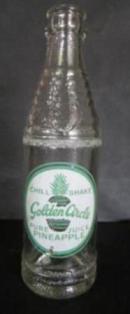 Mum and I would mostly go to the yacht club too and I would spend much of the time playing around the club grounds and slip yards with my friend Johnny who lived at the other end of Alexandra Crescent. Johnny was my age and had a real penchant for mischief and managed to get both of us into varying degrees trouble most weekends. At low tide we would spend lots of time herding great swarms of soldier crabs across the sand flats that stretched out into Pittwater. Most weekends, when our parents were having after-race drinks in the club’s lean-to bar, we would sit outside the boat shed drinking Golden Circle pineapple juice, which came in small thick glass bottles. I think it was possibly the only kid-friendly drink available from the bar.
Mum and I would mostly go to the yacht club too and I would spend much of the time playing around the club grounds and slip yards with my friend Johnny who lived at the other end of Alexandra Crescent. Johnny was my age and had a real penchant for mischief and managed to get both of us into varying degrees trouble most weekends. At low tide we would spend lots of time herding great swarms of soldier crabs across the sand flats that stretched out into Pittwater. Most weekends, when our parents were having after-race drinks in the club’s lean-to bar, we would sit outside the boat shed drinking Golden Circle pineapple juice, which came in small thick glass bottles. I think it was possibly the only kid-friendly drink available from the bar.Sometime during 1959, Dad had a severe heart attack and was advised to give up sailing and so he reluctantly sold the Flying Fifteen. Princess Alexandra, the Queen’s cousin, was visiting Australia at the time and, on the evening of the day when the boat was sold, her motorcade would be travelling to Sydney along the Pacific Highway. We joined the crowd at the corner of the Pacific Highway and Mona Vale Road at Gordon to see the Princess drive past. Minutes before she was due, what should pass across the intersection but Dad’s Flying Fifteen on a boat trailer. I am sure he got a bigger thrill seeing it go past than seeing the Princess wave briefly from the black Rolls or Bentley.
Three years later, when visiting family in Western Australia, dad was able to see Ffiona take second in the inaugural Australian Flying Fifteen championships at Cockburn Sound, just missing out on becoming the first winner of the Coweslip Trophy, donated by the Duke of Edinburgh. It was a very close contest with Ffiona winning two other trophies in that regatta and three of the five qualifying heats for the Coweslip Trophy.

The Duke of Edinburgh's “Coweslip Trophy” ready to be presented for the first time in Perth, January 1963
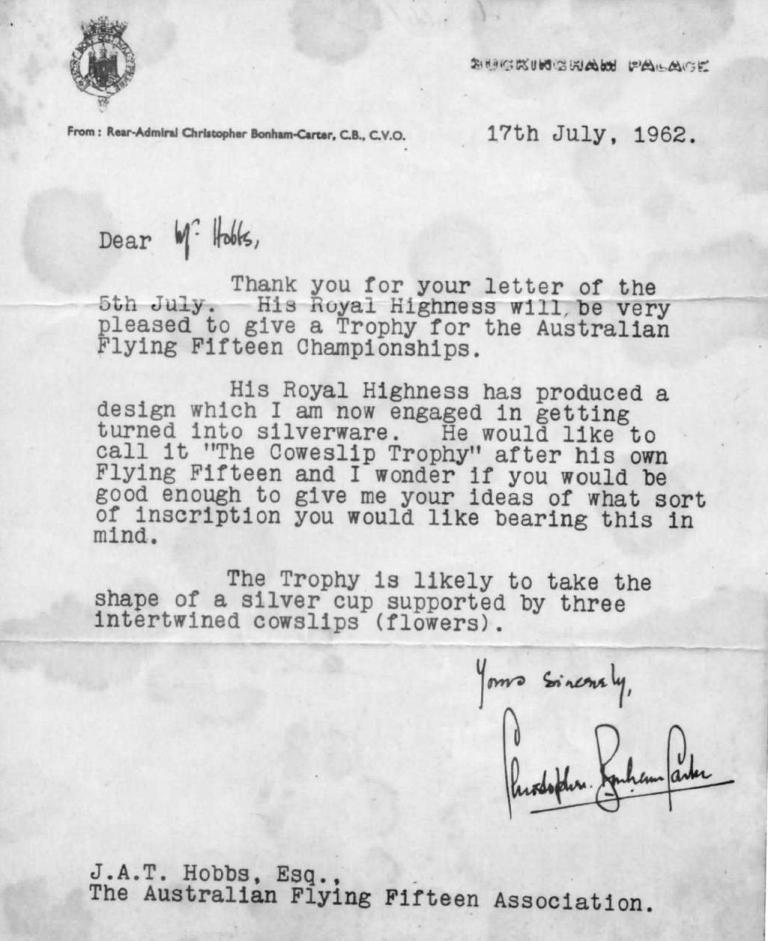
1962 Letter from Rear Admiral Christopher Bonham-Carter about the Trophy
Loquat Valley School
With my mother’s background as a kindergarten teacher, she was concerned about the lack of opportunity for me to socialise with other children in the relative isolation of our house at Bayview. When I was about three or four, she took me to a birthday party for one of her friend’s children at the Rock Lily restaurant at Mona Vale and became concerned that I didn’t talk to any of the other children. (I was reminded of her telling me about this after recently reading In the Pittwater News that the Rock Lily, which opened in 1885, is still operating in Mona Vale.) On the other side of the tank trap on Church Point Road, there was a small private school that had been established in 1947 by aviator Gordon Taylor who flew with Charles Kingsford-Smith. Taylor named it Loquat Valley after the fruit grown locally by the early settlers in the area. The school was later purchased by its founding principal, Mrs. Beryl Day.
Sometime after my fourth birthday, my mother approached Mrs. Day about me attending the school so that I had more contact with other children and Mrs. Day agreed.
According to the school’s website, the first buildings for the school were some ex-army portable huts purchased by Taylor. By the time I started in 1954, the ex-army huts were gone and Loquat Valley School had only one permanent classroom building and a toilet block. The classrooms and staff room/office were in a long rectangular building clad in varnished weatherboards. Varnished cladding must have been a fashion at the time. My grandparents’ house at Warriewood was the same. A sandstone path ran the length of the building leading to the toilets past the far end. There were three composite classes divided by hinged folding partition walls. These walls could be folded back to make a bigger area for assemblies and performances. I think there were only about 12 or 15 children in my class, with possibly more in the other classes. Mrs Day taught the senior class.
The school uniforms were khaki shirt and shorts for boys and green tunics for girls. This combination of khaki and green uniforms prompted kids on the buses travelling along Church Point Road to the schools at Mona Vale and Narrabeen to christen Loquat valley kids as “locusts and grasshoppers”, which they chanted loudly in chorus from the bus windows as they passed the school each morning.
Mum would walk me to school each day. We would walk to the end of Alexandra Crescent and cross the tank trap on an improvised bridge of a couple of logs laid side by side across the trench then down to Church Point Road and a short distance to the school.
I don’t remember much about our school activities and there are no photos from Loquat Valley School. At lunch and recess we would play on a grassy sloping embankment next to the classroom building. We were not allowed to start eating our lunch until after one of the teachers had said grace.
I also remember that we were regularly warned not to drink water out of the taps on the embankment because they had been painted inside with poisonous paint. I have no idea why this particular memory has remained with me – maybe I was fascinated by the concept of poisonous paint inside taps.

Our house at Alexandra Crescent, Bayview, around 1950.
Hugh Buhrich (25 April 1911 – 18 June 2004) was a German architect who arrived in Australia as a refugee from Nazi Germany before World War II. Buhrich's practice, of 40 years, covered commercial and domestic projects. His projects were generally designed in a modernist style and often contained specific interior designs along with the buildings. His most notable and recognized project was the construction of his personal home which is described by Peter Myers as "the finest modern house in Australia".
In his earlier years Buhrich would have pursued medicine instead of architecture, however, it required Latin. Heavily influence by the Bauhaus style, Hugh wanted to enrol in a university located close to home, however his scholarship would have been rendered invalid as he was required to leave. As a result, he attended an architecture school in Munich, until he was ejected by the Nazis in retaliation for student political activity. Shortly afterward Buhrich decided to move to Berlin where he practiced under Hans Poelzig, an architect, painter and set designer. During this time he met his future wife, Eva Buhrich, who was a fellow student. Buhrich eventually moved to Zürich where he finally finished his degree in the German Free state of Danzig, which is now Gdańsk.
Hugh's wife Eva fled Germany to the Netherlands, however, he could not practice architecture there and was forced to go to London by himself. Hugh and Eva ultimately decided to settle in Australia after debating between emigrating to America, which was too competitive, or to South Africa which required a landing fee and was too expensive.
After arriving in Australia, Professor A. S. Hook from the University of Sydney helped Hugh and Eva secure a (shared) architectural job in Canberra. When war broke out, the Buhrichs were dismissed from the job following the return of the original employees. During this time Hugh joined the army and only resumed his practice upon return. Remaining unregistered in New South Wales until 16 November 1971, Hugh restricted himself mainly to furniture and interiors. However, from the 1960s to 1970s, roughly twenty buildings were designed and constructed by Hugh. Unfortunately the vast majority of his work has been demolished but his own house, largely self-built between 1968 and 1972, still stands today and is perhaps the most accomplished of his works.
Notable projects
Buhrich's house was designed and built between 1968 and 1972. It is Located at 375 Edinburgh Road, Castlecrag, and is a reinterpretation of a European modernist aesthetic. The structure stands atop a sandstone ledge overlooking middle harbour and was inhabited by Buhrich for over thirty years. The house was designed and built to accommodate the surrounding landscape and is therefore built at one level. It is meant to give a sense of "going downhill" towards the waterfront. This was accomplished by sloping the ceiling to the legal minimum height facing the water's edge. Almost every part of this highly inventive building was made for a specific purpose with repetitive simple parts and off-the-shelf materials. The house stands out from many other styles during the time period due to the angularity of the plan and the casual regular and irregular geometries. Described by French critic Françoise Fromonot as "a truly radical building" and by Peter Myers as "the finest modern house in Australia", the Buhrich house provides extraordinary beauty into Hugh's most intensely personal project. The house is listed on the NSW Heritage Register as of State significance for its historic and aesthetic values, as well as of particular cultural/social importance amongst the architectural community.
Point Piper House in Point Piper, New South Wales, was designed by Buhrich and completed in 1961. It was extensively renovated in 2005 by Louise Nettleton Architects with the object of keeping Buhrich's original design elements intact. The renovation was given a Commendation Award by the NSW Chapter of the Australian Institute of Architects in 2005.
Hugh Buhrich. (2016, March 16). In Wikipedia, The Free Encyclopedia. from https://en.wikipedia.org/w/index.php?title=Hugh_Buhrich&oldid=710343467
"Obituary". ArchitectureAU
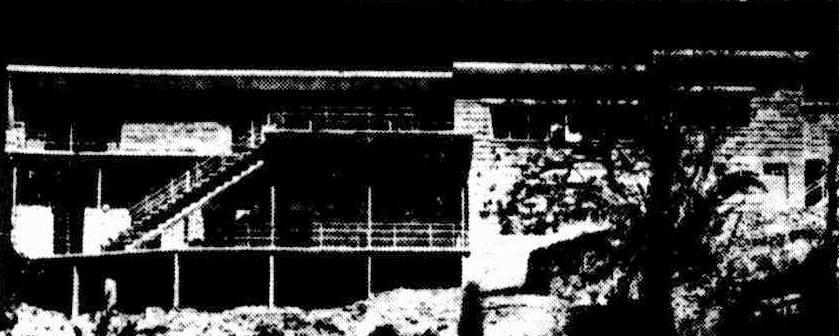
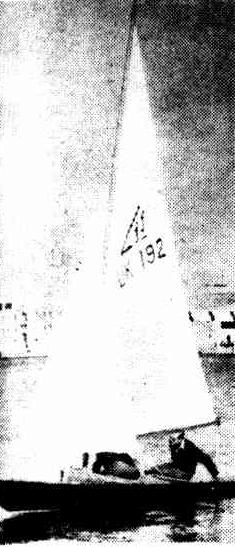 Apart from having a highly successful racing, cruising and sailing career, he ran successful boat design and boatbuilding businesses in the south of England. He designed many of the significant classes of boats around today, including the planing International 14, the Foxcub and Super Foxcub, the Flying Fifteen, the Flying Ten, the National 12, the National 18, the Albacore, the Firefly, the Javelin, the Pegasus Dinghy, the Jollyboat and the Day Sailer. Many of his designs exploited the wartime developments of moulded plywood, extruded aluminium, Tufnol etc..
Apart from having a highly successful racing, cruising and sailing career, he ran successful boat design and boatbuilding businesses in the south of England. He designed many of the significant classes of boats around today, including the planing International 14, the Foxcub and Super Foxcub, the Flying Fifteen, the Flying Ten, the National 12, the National 18, the Albacore, the Firefly, the Javelin, the Pegasus Dinghy, the Jollyboat and the Day Sailer. Many of his designs exploited the wartime developments of moulded plywood, extruded aluminium, Tufnol etc..
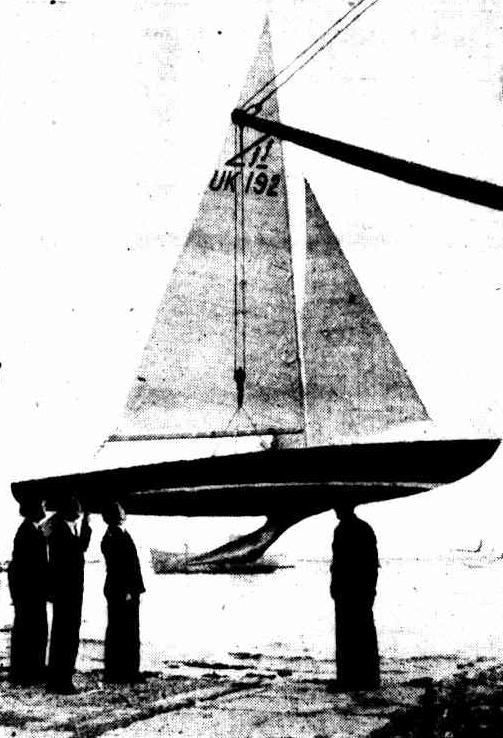
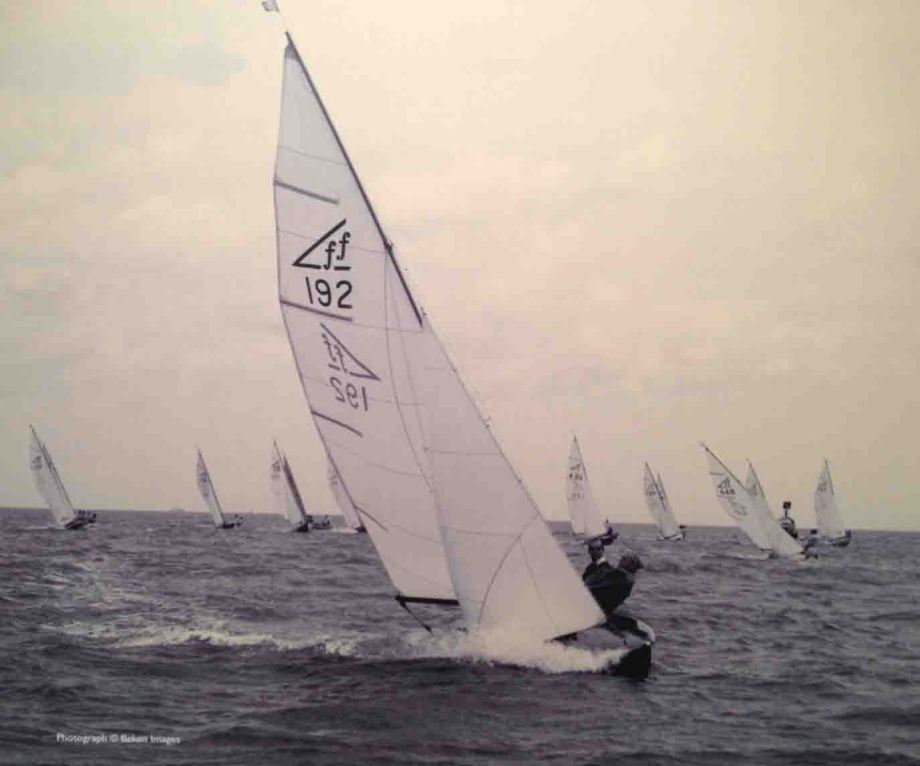 Prince Philip often sailed with Uffa Fox at Cowes in Coweslip.
Prince Philip often sailed with Uffa Fox at Cowes in Coweslip.
The Trophy is a little unusual as it comprises 2 parts firstly there is a silver trophy and rather than have the trophy engraved there is a book in which all of the winners are registered. It is awarded annually to the winner of the Australian Championship.
Winners of The Coweslip Trophy
Year No. Name Helm Crew Home State Host Club
1963 369 Sheba A.Tregonning P.Buchanan R.Manser WA Royal Freshwater Bay Y.C. Sailed on Cockburn Sound
1964 574 Molly-O IV O.McCutcheon A.McCutcheon H.Proctor Vic Sandringham Y.C.
1965 633 Bookiera I.Downing T.Lees M.Dowling NSW Avalon S.C.
1966 868 Ffidelity R.Boynton I.Syme Vic Royal Yacht Club of Tasmania
1967 363 Saba A. Tregonning E.Smith WA Royal Freshwater Bay Y.C.
1968 878 Wimoweth J.Hanford C.Withers Vic Mornington Y.C.
1969 961 Relience II W.Shand E.Shand Vic Royal Yacht Club of Tasmania
1970 961 Relience II W.Shand E.Shand Vic Avalon S.C.
1971 961 Relience II W.L.Shand E.Shand Vic Royal Freshwater Bay Y.C.
1972 961 Relience II W.Shand E.Shand Vic Mornington Y.C.
1973 946 Flight III J.A.Calvert-Jones D.Gibson Vic Royal Queensland Y.S.
1974 1373 Taurus G.Mason J.Mason NSW Canberra Y.C.
1975 1711 Waffa One T.Macky J.Macky NZ Royal Freshwater Bay Y.C.
1976 1663 Relience III W.Shand E.Shand Vic Gippsland Lakes Y.C.
1977 1393 Secret Fifteen K.Jenyns A.Reynolds Qld Royal Queensland Y.S.
1978 1900 Gazelle G.Black I.Ritchie WA Lake Macquarie Y.C.
1979 1714 Eljay G.Lillingston B.Thornlie WA Royal Freshwater Bay Y.C.
1980 1714 Eljay G.Lillingston A.Elliott WA Davey’s Bay Y.C.
1981 1367 Esjay G.Lillingston S.Batley WA Royal Queensland Y.S.
1982 2246 Free’n’Easy G.Lillingston G.Totterdell WA Canberra Y.C.
1983 1724 Charisma R.Verco I.Lovell WA Esperance Bay Y.C.
1984 1367 Esjay G.Lillingston M.McKenzie WA Gippsland Lakes Y.C.
1985 2907 Ffloating Pound D. Skipworth G.Wells GBR Royal Queensland Y.S.
1986 2904 Gazelle V G.Black J.Anderson WA Lake Macquarie Y.C.
1987 2355 RuffeNuff G.Lillingston M.Green WA Royal Freshwater Bay Y.C.
1988 3061 Hottatrot C.Villa S.Happ NSW Mornington Y.C.
1989 3058 Just Add Water G.Alderson G.Lillingston WA Lake Macquarie Y.C.
1990 3058 Just Add Water G.Alderson W.Miller WA Royal Queensland Y.S.
1991 3308 Tuffa Gruffa J.Thomson R.VanVeenendaal Vic Canberra Y.C.
1992 3095 Fiddle Dee Dee G.Lillingston M.Green WA Esperance Bay Y.C.
1993 3443 Glamour Puss G.Alderson A.Harry WA Davey’s Bay Y.C.
1994 3239 Fifteen Carat P.Watson D.Stevens Vic Royal Yacht Club of Victoria
1995 3095 Fiddle Dee Dee G.Lillingston E.Repsevicius WA Royal Queensland Y.S.
1996 3257 Think Big C.Rainey I.Rainey Vic Canberra Y.C.
1997 3582 Crash Test Dummies G.Alderson M.Thomas WA Royal Freshwater Bay Y.C.
1998 3224 Crucial Moment G.Lillingston E.Repsevicius WA Mornington Y.C.
1999 3621 Two Lunches S.Goacher P.Evans GBR Esperance Bay Y.C.
2000 3455 Watches of Switzerland C.Mason H.Kruse Vic Royal Queensland Y.S.
2001 3619 Affrodisiac R.Packer P.Mudford WA Royal Prince Alfred Y.C.
2002 3743 Spot The Difference N.Jerwood G.Lillingston WA Gippsland Lakes Y.C.
2003 3743 Spot The Difference N.Jerwood J.Jerwood WA Royal Freshwater Bay Y.C.
2004 3670 Escalator G.Porter E.Repsevicius WA Tin Can Bay Y.C.
2005 3833 No Bull G.Alderson D.McAullay WA Adelaide S.C.
2006 3620 Wings J.Tracey C.Murphy ACT Canberra Y.C.
2007 3833 No Bull G.Alderson D.McAullay WA Royal Brighton Y.C.
2008 3833 No Bull G.Alderson D.McAullay WA Geraldton Y.C.
2009 3833 No Bull G.Alderson D.McAullay WA Royal Yacht Club of Victoria
2010 3781 16 D.Tucker M.Summers WA Sandgate Y. C.
2011 3311 Form 3020 M.Owen A.Reed ACT Canberra Y. C.
2012 3988 Freshwater 2 S.Goacher M.Owen UK South of Perth Y C
2013 3881 I’d Swap this for a Bundy A.Hawkins B.Jones Vic Davey’s Bay Y. C.
2014 3684 Deffcon 1 M.Owen A.Reed ACT Lake Macquarie Y. C.
2015 3972 FF Sake A.Smith A.Kingston Qld Sandgate Y C
2016 3684 Deffcon 1 M.Owen A.Reed ACT Canberra Y.C.
In his earlier years Buhrich would have pursued medicine instead of architecture, however, it required Latin. Heavily influence by the Bauhaus style, Hugh wanted to enrol in a university located close to home, however his scholarship would have been rendered invalid as he was required to leave. As a result, he attended an architecture school in Munich, until he was ejected by the Nazis in retaliation for student political activity. Shortly afterward Buhrich decided to move to Berlin where he practiced under Hans Poelzig, an architect, painter and set designer. During this time he met his future wife, Eva Buhrich, who was a fellow student. Buhrich eventually moved to Zürich where he finally finished his degree in the German Free state of Danzig, which is now Gdańsk.
Hugh's wife Eva fled Germany to the Netherlands, however, he could not practice architecture there and was forced to go to London by himself. Hugh and Eva ultimately decided to settle in Australia after debating between emigrating to America, which was too competitive, or to South Africa which required a landing fee and was too expensive.
After arriving in Australia, Professor A. S. Hook from the University of Sydney helped Hugh and Eva secure a (shared) architectural job in Canberra. When war broke out, the Buhrichs were dismissed from the job following the return of the original employees. During this time Hugh joined the army and only resumed his practice upon return. Remaining unregistered in New South Wales until 16 November 1971, Hugh restricted himself mainly to furniture and interiors. However, from the 1960s to 1970s, roughly twenty buildings were designed and constructed by Hugh. Unfortunately the vast majority of his work has been demolished but his own house, largely self-built between 1968 and 1972, still stands today and is perhaps the most accomplished of his works.
Notable projects
Buhrich's house was designed and built between 1968 and 1972. It is Located at 375 Edinburgh Road, Castlecrag, and is a reinterpretation of a European modernist aesthetic. The structure stands atop a sandstone ledge overlooking middle harbour and was inhabited by Buhrich for over thirty years. The house was designed and built to accommodate the surrounding landscape and is therefore built at one level. It is meant to give a sense of "going downhill" towards the waterfront. This was accomplished by sloping the ceiling to the legal minimum height facing the water's edge. Almost every part of this highly inventive building was made for a specific purpose with repetitive simple parts and off-the-shelf materials. The house stands out from many other styles during the time period due to the angularity of the plan and the casual regular and irregular geometries. Described by French critic Françoise Fromonot as "a truly radical building" and by Peter Myers as "the finest modern house in Australia", the Buhrich house provides extraordinary beauty into Hugh's most intensely personal project. The house is listed on the NSW Heritage Register as of State significance for its historic and aesthetic values, as well as of particular cultural/social importance amongst the architectural community.
Point Piper House in Point Piper, New South Wales, was designed by Buhrich and completed in 1961. It was extensively renovated in 2005 by Louise Nettleton Architects with the object of keeping Buhrich's original design elements intact. The renovation was given a Commendation Award by the NSW Chapter of the Australian Institute of Architects in 2005.
Hugh Buhrich. (2016, March 16). In Wikipedia, The Free Encyclopedia. from https://en.wikipedia.org/w/index.php?title=Hugh_Buhrich&oldid=710343467
"Obituary". ArchitectureAU
The House That Looks Like A Ship

BALMORAL people, gazing up at the house which Hugh Buhrich designed for the late Mr. John Mendl and Mrs. Mendl on the heights of Mosman, have christened it "The Ship." "At night, with all its lights shining from windows and terraces, , it looks just like a ship sailing the high seas," they say. (More pictures and description in article). The House That Looks Like A Ship (1952, November 30). The Sunday Herald (Sydney, NSW : 1949 - 1953), , p. 20. Retrieved from http://nla.gov.au/nla.news-article18517695
TWIN DESIGNS FOR BOYS
FLOOR - TO - CEILING bookcases piovide stoiage space for hobbies and sports equipment in this bedroom which Mr and Mis Hugh Buhrich designed for their twin sons The boys' initials act as door and cupboard handles...TWIN DESIGNS FOR BOYS (1952, December 4). The Sydney Morning Herald (NSW : 1842 - 1954), , p. 3 (Women's Section). Retrieved from http://nla.gov.au/nla.news-article18293622
HOUSE of the WEEK. This Newport, N.S.W., home was designed by Hugh Buhrich for Mr. and Mrs. Tom Hamilton and their daughters, Louise and Julia. The girls are trainee nurses, so the house had to combine quiet study areas with open living spaces favored by the family. Continued on page 67. Coloued Pictures by RON BERG. Open-plan living areas and quiet rooms for study (1970, June 3). The Australian Women's Weekly (1933 - 1982), , p. 64. Retrieved from http://nla.gov.au/nla.news-article51275372
Uffa Fox, CBE (15 January 1898 – 26 October 1972) was an English boat designer and sailing enthusiast. He was born on the Isle of Wight and was raised in East Cowes. He lived for a while in Puckaster on the Isle of Wight.
He was responsible for many of the developments which have contributed to the modern popularity of Dinghy sailing. He first introduced the technique of planing to dinghy racing, and was influential in the introduction of trapezing.
In about 1943 he designed a 27 ft lifeboat to be dropped from Vickers Warwick aircraft when rescuing downed aircrew or mariners. An example of this craft and of others built and/or designed by Fox are in the collections of the Classic Boat Museum at East Cowes, Isle of Wight. These boats could be released from under the aeroplane retarded by six 32 ft diameter parachutes. Although initially adapted for the Warwick, the lifeboat was subsequently also carried by Air-Sea Rescue Lancasters and B-17 Flying Fortresses. The museum also holds a large collection of photographs by and about Fox.
He became a friend of the Duke of Edinburgh in 1949 and they raced together at Cowes Week on many occasions. They raced on Fox's Dragon "Fresh Breeze" or the Duke's 'Royal' Dragon "Bluebottle" He also took the Royal children sailing at Cowes.
 Apart from having a highly successful racing, cruising and sailing career, he ran successful boat design and boatbuilding businesses in the south of England. He designed many of the significant classes of boats around today, including the planing International 14, the Foxcub and Super Foxcub, the Flying Fifteen, the Flying Ten, the National 12, the National 18, the Albacore, the Firefly, the Javelin, the Pegasus Dinghy, the Jollyboat and the Day Sailer. Many of his designs exploited the wartime developments of moulded plywood, extruded aluminium, Tufnol etc..
Apart from having a highly successful racing, cruising and sailing career, he ran successful boat design and boatbuilding businesses in the south of England. He designed many of the significant classes of boats around today, including the planing International 14, the Foxcub and Super Foxcub, the Flying Fifteen, the Flying Ten, the National 12, the National 18, the Albacore, the Firefly, the Javelin, the Pegasus Dinghy, the Jollyboat and the Day Sailer. Many of his designs exploited the wartime developments of moulded plywood, extruded aluminium, Tufnol etc..The Flying Fifteen was quickly popular and the most famous Flying Fifteen is Coweslip presented to the Duke of Edinburgh and Princess Elizabeth as a wedding present by the town of Cowes. Uffa Fox and Prince Philip frequently sailed together at Cowes.
Right: The Duke of Edinburgh, accompanied by Paul Vella, sailing his new yacht Coweslip in Malta Grand Harbour.
Vella owns the shipyard where the yacht is stored. This was the first occasion (he craft had taken the water with the Duke at the helm. (A.P.photo.) Duke At Helm (1949, November 30). The Mercury (Hobart, Tas. : 1860 - 1954), , p. 17. Retrieved from http://nla.gov.au/nla.news-article26671203
In addition to dinghies he designed several keel boats all loosely based on the same concept as the flying fifteen, with separate fin keel and rudder. They were very light weight compared with other boats of the era. Huff of Arklow for Douglas Heard was 30'-0" on the waterline and Flying Fox for Fred Brownlee was 35'-0" waterline length.
Uffa Fox designed the Britannia rowboat, used by John Fairfax, used for the first solo-rowing expedition across the Atlantic Ocean in 1969. The Britannia was described as "the Rolls-Royce of rowboats, made of mahogany." It was self-righting, self-bailing and partly covered. He also designed Britannia II , used by John Fairfax and Sylvia Cook to row across the Pacific Ocean in 1971 through 1972.
His character is perhaps best indicated by an escapade whereby he led a group of Sea Scouts, without their parents' consent (they thought it was a weekend sailing camp), across the English Channel and up the Seine to within a few kilometres of Paris in a 25 ft open boat. He was also among the crew of the Typhoon, an account of which was written and published by William Washburn Nutting in "In the Track of Typhoon" (1922). Fox joined the crew in England for her transatlantic return via France, Spain, and the Azores into NYC.
Uffa Fox. (2016, April 23). In Wikipedia, The Free Encyclopedia. Retrieved from https://en.wikipedia.org/w/index.php?title=Uffa_Fox&oldid=716744710
NEW RACING YACHT FOR THE DUKE OF EDINBURGH .

The "Cowslip" was designed and built by Uffa Fox at Medina Yard, Cowes, and will go to Malta to race there. Watching the launching is Uffa Fox, Lt.-Commander Crichton, Sailing Master to the Duke of Edinburgh, and Mr. J..F. Sinclair, chairman of Cowes Urban District Council. NEW RACING YACHT FOR THE DUKE OF EDINBURGH (1949, October 29). The Canberra Times (ACT : 1926 - 1995), , p. 2. Retrieved from http://nla.gov.au/nla.news-article2750222

A photo taken of a photograph displayed on the Ex Royal yacht Brittannia. This Shows HRH and Uffa Fox in a FF and apparently leading the race. Courtesy David - UK, and The Flying Fifteen Blog
The Coweslip Trophy was presented to the Association by HRH Prince Philip in 1962 and is named after the Flying Fifteen Uffa Fox presented to HM Queen Elizabeth & Prince Philip as a wedding present.
The Trophy is a little unusual as it comprises 2 parts firstly there is a silver trophy and rather than have the trophy engraved there is a book in which all of the winners are registered. It is awarded annually to the winner of the Australian Championship.
Winners of The Coweslip Trophy
Year No. Name Helm Crew Home State Host Club
1963 369 Sheba A.Tregonning P.Buchanan R.Manser WA Royal Freshwater Bay Y.C. Sailed on Cockburn Sound
1964 574 Molly-O IV O.McCutcheon A.McCutcheon H.Proctor Vic Sandringham Y.C.
1965 633 Bookiera I.Downing T.Lees M.Dowling NSW Avalon S.C.
1966 868 Ffidelity R.Boynton I.Syme Vic Royal Yacht Club of Tasmania
1967 363 Saba A. Tregonning E.Smith WA Royal Freshwater Bay Y.C.
1968 878 Wimoweth J.Hanford C.Withers Vic Mornington Y.C.
1969 961 Relience II W.Shand E.Shand Vic Royal Yacht Club of Tasmania
1970 961 Relience II W.Shand E.Shand Vic Avalon S.C.
1971 961 Relience II W.L.Shand E.Shand Vic Royal Freshwater Bay Y.C.
1972 961 Relience II W.Shand E.Shand Vic Mornington Y.C.
1973 946 Flight III J.A.Calvert-Jones D.Gibson Vic Royal Queensland Y.S.
1974 1373 Taurus G.Mason J.Mason NSW Canberra Y.C.
1975 1711 Waffa One T.Macky J.Macky NZ Royal Freshwater Bay Y.C.
1976 1663 Relience III W.Shand E.Shand Vic Gippsland Lakes Y.C.
1977 1393 Secret Fifteen K.Jenyns A.Reynolds Qld Royal Queensland Y.S.
1978 1900 Gazelle G.Black I.Ritchie WA Lake Macquarie Y.C.
1979 1714 Eljay G.Lillingston B.Thornlie WA Royal Freshwater Bay Y.C.
1980 1714 Eljay G.Lillingston A.Elliott WA Davey’s Bay Y.C.
1981 1367 Esjay G.Lillingston S.Batley WA Royal Queensland Y.S.
1982 2246 Free’n’Easy G.Lillingston G.Totterdell WA Canberra Y.C.
1983 1724 Charisma R.Verco I.Lovell WA Esperance Bay Y.C.
1984 1367 Esjay G.Lillingston M.McKenzie WA Gippsland Lakes Y.C.
1985 2907 Ffloating Pound D. Skipworth G.Wells GBR Royal Queensland Y.S.
1986 2904 Gazelle V G.Black J.Anderson WA Lake Macquarie Y.C.
1987 2355 RuffeNuff G.Lillingston M.Green WA Royal Freshwater Bay Y.C.
1988 3061 Hottatrot C.Villa S.Happ NSW Mornington Y.C.
1989 3058 Just Add Water G.Alderson G.Lillingston WA Lake Macquarie Y.C.
1990 3058 Just Add Water G.Alderson W.Miller WA Royal Queensland Y.S.
1991 3308 Tuffa Gruffa J.Thomson R.VanVeenendaal Vic Canberra Y.C.
1992 3095 Fiddle Dee Dee G.Lillingston M.Green WA Esperance Bay Y.C.
1993 3443 Glamour Puss G.Alderson A.Harry WA Davey’s Bay Y.C.
1994 3239 Fifteen Carat P.Watson D.Stevens Vic Royal Yacht Club of Victoria
1995 3095 Fiddle Dee Dee G.Lillingston E.Repsevicius WA Royal Queensland Y.S.
1996 3257 Think Big C.Rainey I.Rainey Vic Canberra Y.C.
1997 3582 Crash Test Dummies G.Alderson M.Thomas WA Royal Freshwater Bay Y.C.
1998 3224 Crucial Moment G.Lillingston E.Repsevicius WA Mornington Y.C.
1999 3621 Two Lunches S.Goacher P.Evans GBR Esperance Bay Y.C.
2000 3455 Watches of Switzerland C.Mason H.Kruse Vic Royal Queensland Y.S.
2001 3619 Affrodisiac R.Packer P.Mudford WA Royal Prince Alfred Y.C.
2002 3743 Spot The Difference N.Jerwood G.Lillingston WA Gippsland Lakes Y.C.
2003 3743 Spot The Difference N.Jerwood J.Jerwood WA Royal Freshwater Bay Y.C.
2004 3670 Escalator G.Porter E.Repsevicius WA Tin Can Bay Y.C.
2005 3833 No Bull G.Alderson D.McAullay WA Adelaide S.C.
2006 3620 Wings J.Tracey C.Murphy ACT Canberra Y.C.
2007 3833 No Bull G.Alderson D.McAullay WA Royal Brighton Y.C.
2008 3833 No Bull G.Alderson D.McAullay WA Geraldton Y.C.
2009 3833 No Bull G.Alderson D.McAullay WA Royal Yacht Club of Victoria
2010 3781 16 D.Tucker M.Summers WA Sandgate Y. C.
2011 3311 Form 3020 M.Owen A.Reed ACT Canberra Y. C.
2012 3988 Freshwater 2 S.Goacher M.Owen UK South of Perth Y C
2013 3881 I’d Swap this for a Bundy A.Hawkins B.Jones Vic Davey’s Bay Y. C.
2014 3684 Deffcon 1 M.Owen A.Reed ACT Lake Macquarie Y. C.
2015 3972 FF Sake A.Smith A.Kingston Qld Sandgate Y C
2016 3684 Deffcon 1 M.Owen A.Reed ACT Canberra Y.C.